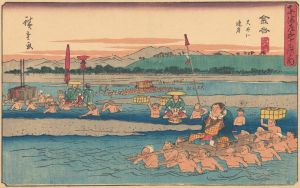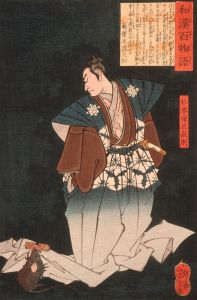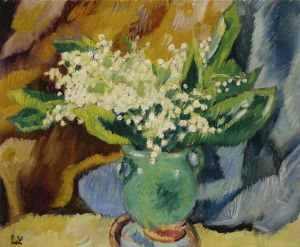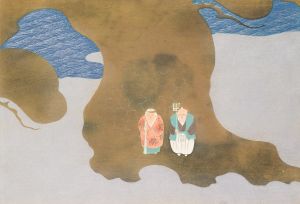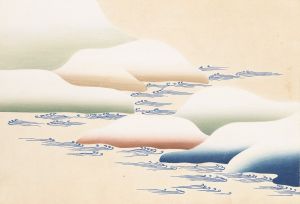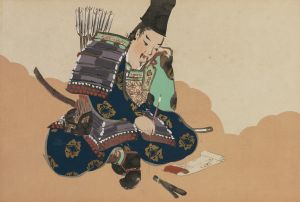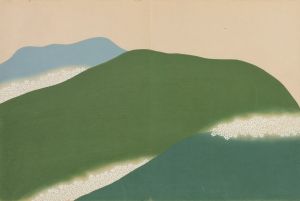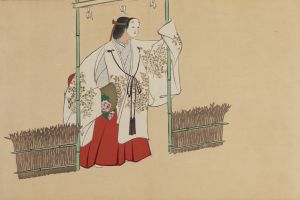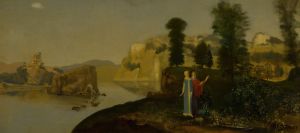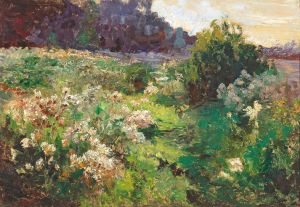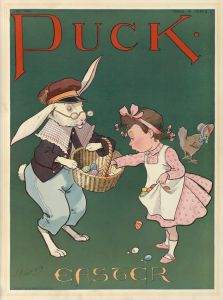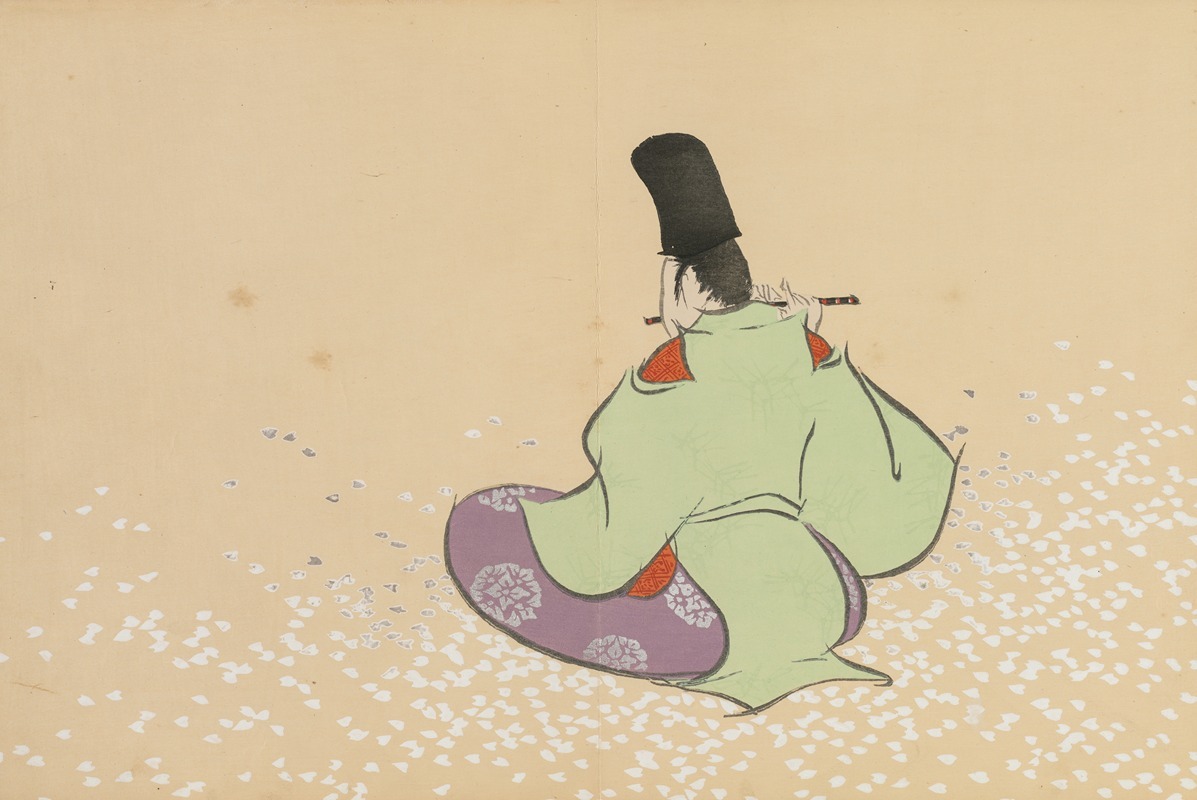
Late Spring
A hand-painted replica of Kamisaka Sekka’s masterpiece Late Spring, meticulously crafted by professional artists to capture the true essence of the original. Each piece is created with museum-quality canvas and rare mineral pigments, carefully painted by experienced artists with delicate brushstrokes and rich, layered colors to perfectly recreate the texture of the original artwork. Unlike machine-printed reproductions, this hand-painted version brings the painting to life, infused with the artist’s emotions and skill in every stroke. Whether for personal collection or home decoration, it instantly elevates the artistic atmosphere of any space.
Kamisaka Sekka (1866–1942) was a prominent Japanese artist and designer, known for his contributions to the Rinpa school of painting. He played a significant role in the modernization of traditional Japanese art during the Meiji and Taisho periods. Sekka's work is characterized by its vibrant colors, bold compositions, and the fusion of traditional Japanese aesthetics with Western influences.
"Late Spring" is one of Kamisaka Sekka's notable works, reflecting his unique style and artistic philosophy. While specific details about this particular piece are limited, it is representative of Sekka's broader body of work, which often features themes from nature, such as flowers, landscapes, and seasonal changes. His art is known for its decorative quality and often includes elements that are both visually striking and imbued with cultural symbolism.
Sekka's approach to art was heavily influenced by the Rinpa school, which originated in the early 17th century and is known for its emphasis on natural themes, use of vibrant colors, and incorporation of gold and silver leaf. The Rinpa school was founded by Hon'ami Kōetsu and Tawaraya Sōtatsu and later revitalized by Ogata Kōrin. Sekka, in the late 19th and early 20th centuries, sought to revive and modernize this traditional style, integrating it with contemporary trends and techniques.
In "Late Spring," as in many of his works, Sekka likely employed a combination of traditional Japanese painting techniques and modern design principles. His use of color and form would have been carefully considered to evoke the essence of the season, capturing the transient beauty of springtime. Sekka's work often includes a sense of rhythm and movement, guiding the viewer's eye across the composition in a harmonious flow.
Sekka was also known for his work in various other media, including textiles, ceramics, and lacquerware. His versatility as an artist and designer allowed him to influence a wide range of artistic fields, and his contributions to the arts were recognized both in Japan and internationally. He participated in several international exhibitions, where his work was celebrated for its innovative blend of tradition and modernity.
"Late Spring," like many of Sekka's works, would have been created during a time of significant cultural change in Japan. The Meiji Restoration had opened Japan to Western influences, and artists like Sekka were at the forefront of integrating these new ideas with traditional Japanese art forms. This period of artistic experimentation and fusion is reflected in Sekka's work, which continues to be appreciated for its beauty and historical significance.
Today, Kamisaka Sekka is remembered as a master of the Rinpa school and a pioneer of modern Japanese design. His works are held in high regard and are part of numerous museum collections worldwide, where they continue to inspire artists and art enthusiasts alike.





